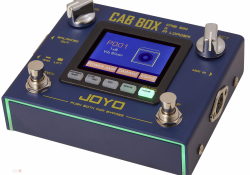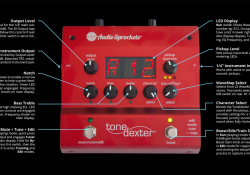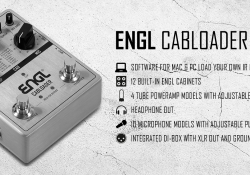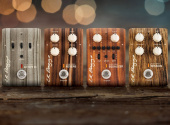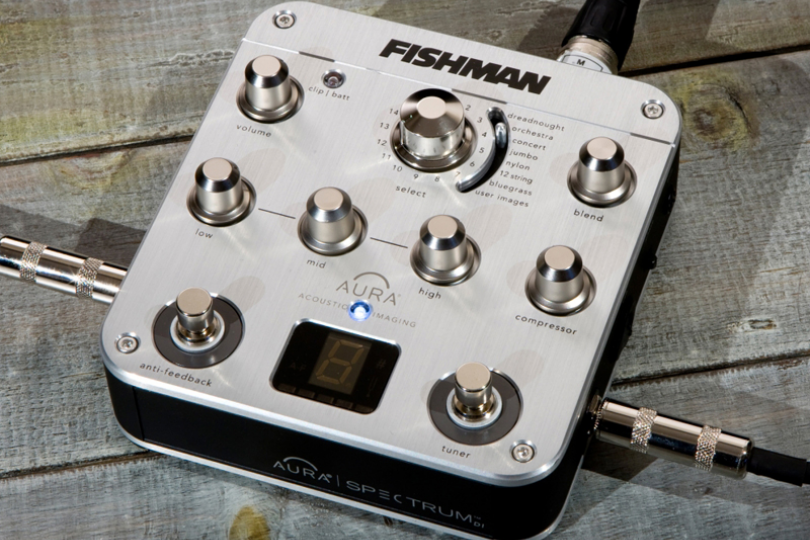
The Handbook for Electro Acoustic Guitarists, Chapter 7: Impulse Response
The mysterious acronym IR, or impulse response, started a revolution in a way, first with convolution reverb for sound engineers, then dominating the field as a speaker simulator for electric guitars – and finally reaching acoustic instruments. Welcome to the next part of our series.
The sophisticated method of picking up specifics of a particular space and adding them to a 'dry' sound recorded elsewhere was first used by film sound engineers. Later, it successfully spread everywhere, gradually replacing all sorts of wild experiments in recording reverberation using reflective glass plates or recording in legendary basement corridors, not only because of its factual simplicity but also, above all, because of its uncompromising quality. The advent of computers has then enabled penetration into other segments and has been used in electric guitar recording, where a clever application can replace the roaring full stack, and a super sound can be obtained without sonic annihilation of the surrounding fellow citizens. I, for example, recorded an Anděl award-nominated record in my bedroom and in hotel rooms. So what makes this method interesting for an acoustic guitarist?
Since, immodestly speaking, I am one of the pioneers of IR in the Czech Republic, where I have been researching this issue for more than a decade with my colleagues from the Instrumento forum, I had the idea of using IR for making acoustic guitar sound. In simple terms – adding the microphone sound to the line signal without any cursed feedback. I was inspired to do this by the Fishman company, who at the time were already promoting their acoustic images in their Aura product line. I still have and use their first and long out-of-production Aura Blender. In the meantime, of course, a number of Aura products have appeared in the form of external (Spectrum DI, etc.) and even internal (Ellipse, Onboard PRO) preamps. Aura Imaging technology has also been used in Martin, Godin or more recently in the impressive Fender Acoustasonic hybrid.
Some may still remember Fishman's offer, for 199 dollars, that if you sent your guitar to them they would produce your Aura presets with high-end microphones, which became the basis of the so-called Aura Gallery that was then included in other Aura successors. In the app, you could have chosen a preset according to the body shape or wood type (to be as close to your particular instrument as possible), but when Auras started to appear on our stages back in the day, folk sound engineers often commented on it saying that "the famous Aura sucks". But that was just a mutual misunderstanding. Guitarists took Aura as a miracle that would finally cure all piezo ailments (and ensure world peace), they overdid it with the setup, and, unfortunately, often got a "barrel-like sound" on the stage.
For this miracle is not self-sustaining. If you don't choose a suitable preset and mix more than 50% of it, the result is most often an ugly, barrel-like, unnatural sound. However, if you take the trouble to look, listen and compare samples, the Aura can reward you superbly and greatly improve your sound. Today's Auras allow this exploration very conveniently – i.e. only 12 presets can be loaded into my Blender at a time, so I used to patiently analyze the then 500 images for many days. The result was surprising because for one guitar maybe 15 presets worked nicely and for some, there was none really working. Unwittingly, I discovered the limits of this method, when it is usually safer to get as close to the real thing as possible (i.e. to choose an adequate image for a dreadnought with a spruce soundboard and rosewood back). Otherwise, you are trying to add non-existent frequencies to the instrument – and that usually results in the “barrel-like” sound.
Fishman kept the technical information carefully under wraps, and for a long time, it was not clear how it actually worked. But I began to realise some of the connections and similarities when using electrical impulses, and a little more detailed analysis in an obscure American blog led me to the clear conclusion that it couldn't be anything other than IR! We embarked on some wild experimentation and managed to get impulses that worked even better than Aura Images in specific cases. It's not quite as perfect as speaker picking, because there's so much more going on in the body of the guitar but it really helps eliminate the biggest problems of piezo sound picking...
The correctness of this hypothesis has been confirmed by the invisible hand of the market, as gradually companies offering acoustic impulses for sale have appeared. I would definitely recommend trying them first though, because despite the convincing promo videos, they might not exactly work for you. Incidentally, they didn't work for me, for example.
The limitation is that they are not universal – so my friend's awesome impulses were completely useless to me (as mine were to him), but to another colleague, one of my impulses worked well with his guitar. It's always a bit of looking for a needle in a haystack (as I'm sure the seekers of perfect IR speakers will attest), so it's more effective to create your own impulses. It's not that complicated. For example, if you're in the studio and have your sound ready, you'll strum some of your characteristic passages, record the mic(s) and line (output from the piezo pickup) separately, and make your impulse using software (e.g. Voxengo Deconvoler). And because we live in paradise today, there is no need to be limited by the computer and you can add the impulse to the line sound live using a box called an IR loader, which can do 3rd party IR (foreign impulse) and of which there are plenty on the market today. They are actually microcomputers that are capable of impulse playback. To use a layman's explanation, an impulse is something like several hundred delays in a row, which of course needs some computing power. I'm happy using a Mooer Radar and Hotone Binary Cab but Joyo R-08 or Engl Cabloade will serve well, too.
Those who would find a bit of necessary self-study on "impulsing" too demanding, can get the Tonedexter – a perfect box that would do it all for them. I'm gradually processing impulses for other acoustic instruments like bouzouki, mandolin or cello, as it can greatly improve their stage sound as well. With this audio icing on the cake, I'd finish nurturing the basic sound. And next time, let's venture into the endless depths of the effects ocean.
If you have found an error or typo in the article, please let us know by e-mail info@insounder.org.

